6 Korean Foods For The Adventurous
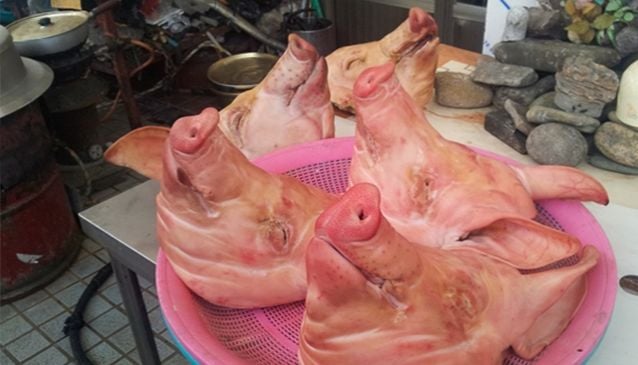
It is a mark of honor in Seoul to have experienced sannakji - a dining experience that will be etched in your memory forever
By Ryan Walters for My Guide Seoul
In the realm of global culinary delights, Korean cuisine stands as an underappreciated goliath. It boasts some of the most delectable dishes in Asia, spanning from succulent barbecued beef and crispy fried pork cutlets, to an array of steaming soups and countless variations of fiery kimchi. Regardless of the weather or season in Seoul, Koreans always have a delectable dish tailored specifically for the occasion.
Seoul is a veritable paradise for food enthusiasts.
In addition to the more traditional Korean BBQ, samgyeopsal, and bibimbap dishes, there exists a whole other realm of Korean cuisine that may catch you off guard at first.
While most carnivores have no qualms about consuming chicken legs, have you ever considered going a step further and indulging in the feet? Perhaps you savor a slice of ham, but how about snacking on the internal intestines? Maybe even enjoying something that is not yet quite dead?
Read on to discover 6 of Seoul's most daring culinary adventures...
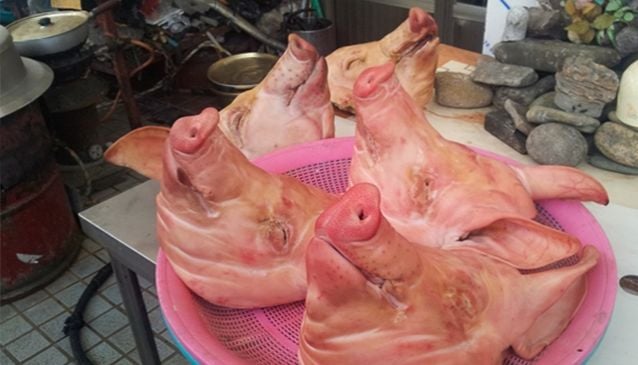
One of the most beloved street foods in Seoul is sundae (ìë), a type of blood sausage. Although sundae comes in various forms, the most common variety is made from pig's intestines filled with noodles and pig's blood.
Sundae can be found on almost every street in Seoul. You don't need to visit a fancy restaurant, just look out for the orange tents located in bustling areas like Gangnam Station or Konkuk University. Typically priced at about 3,000 won (~$3.50), you will receive a generous portion, almost too much for a single person. Often, sundae is coated in ddeokbokki sauce and seasoned with salt, combining the savory taste of pork with the spiciness of red chili peppers.
Street vendors often serve sundae alongside fat rice cakes and deep-fried seafood, creating a dish known as Twiddeoksun (íë¡ì), which combines deep-fried food, rice cakes, and sundae for approximately 5,000 won. This street food feast is best shared with friends, as it would be nearly impossible to finish it all alone, unless you are attempting to prepare for a Korean winter by gaining weight.
Once you come to terms with the fact that sundae is made from pig's intestines (which actually applies to most sausages) and that it contains blood, you will discover that sundae is incredibly satisfying, savory, and addicting.
The blood content does not impart any specific flavor to the sundae, mostly contributing to its color. After avoiding sundae for nearly three years due to the thought of consuming blood, I became a devoted convert and regretted the time I wasted not enjoying sundae. Why? Because it is absolutely delicious!
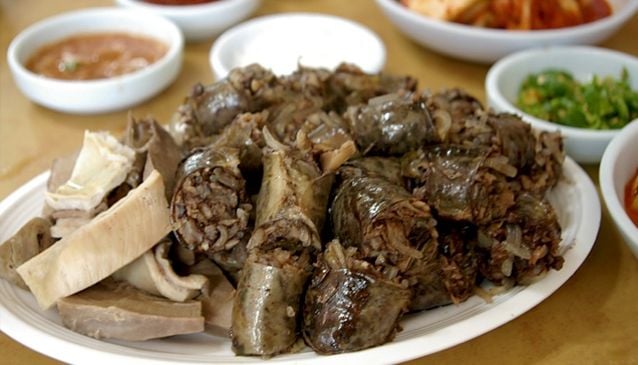
Koreans have an affinity for meat and ensure that no part of the animal goes to waste. When virtually every part of the pig has been consumed, the only remaining edible parts are the feet. And yes, those are most definitely eaten!
Enter dalkbal (ëë°), which literally translates to "chicken feet." Dalkbal is not some obscure or dying delicacy reserved for older generations in Korea; in fact, both dalkbal and jokbal are widely enjoyed, with restaurants specializing in these dishes can be found everywhere in Seoul.
Dalkbal does not pretend to be anything other than what it is - a chicken's foot. Typically, it is coated in spicy yangnyeom garlic sauce, enhancing its delicious flavor.
There are two types of dalkbal. The larger ones require the use of a glove. Slip on a plastic glove, pick up the dalkbal, and enjoy the savory meaty morsels that surround the feet.
The smaller variety of dalkbal can be consumed with a pair of chopsticks in one bite.
Almost every Korean-style pub or hof serves dalkbal.
We highly recommend trying Bangbeom Pocha in Gyeongnidan, Itaewon. This small Korean dining pub has garnered much acclaim and has been featured in numerous magazines. Locals visit this establishment to savor delicious side dishes, enjoy drinks, and have a great time. It is not uncommon to witness guests singing or entertaining one another. Indeed, it is a truly authentic local experience!
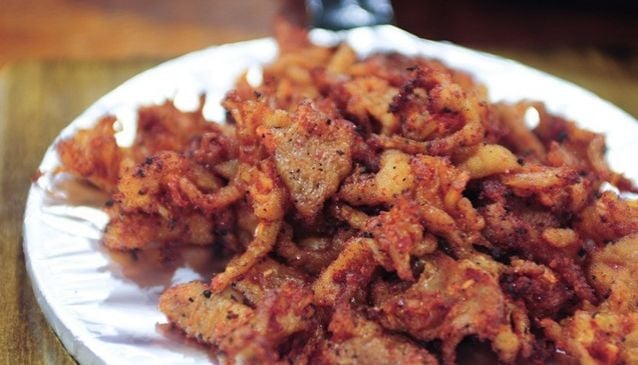
You might have already sampled octopus in sushi during your travels or unexpectedly encountered octopus in Korean-style dishes (such as baby octopuses in cream pasta), but have you ever tried eating freshly chopped octopus that was still alive just five minutes prior?
Sannakji (ì°ëì§) consists of chopped octopus tentacles that continue to move. Although the tentacles are unaware that they have been chopped and are ready to be consumed, they put up quite a fight - clinging to the plate with their suction cups and resisting your every attempt to pick them up with chopsticks.
Sannakji is usually served with sesame and sesame oil, although many restaurants offer Japanese soy sauce and wasabi as accompaniments, as well as other Korean sauces. Carefully chew the octopus before swallowing - there is a myth that some individuals have choked on particularly large pieces of sannakji!
While this might deter the cautious traveler, sannakji is an absolute must-try if you are visiting Seoul. It may require some courage to face a plate of moving octopus tentacles and convince yourself to eat them, but trust me, just go for it.
Having consumed sannakji is considered a badge of honor in Seoul - a dining experience that will remain forever etched in your memory. It is not a main dish, so while you await a scrumptious plate of sliced raw fish (hoe), pour yourself a shot of soju and prepare for the sensation of eating live octopus!
Noryangjin Fish Market, Seoul's largest seafood market, is the ultimate destination to sample sannakji!
You can reach Noryangjin by taking subway line number 9 and heading towards the seafood market. Even if sannakji proves to be too daring for your taste, the wide variety of restaurants at Noryangjin will certainly have something to delight seafood enthusiasts.
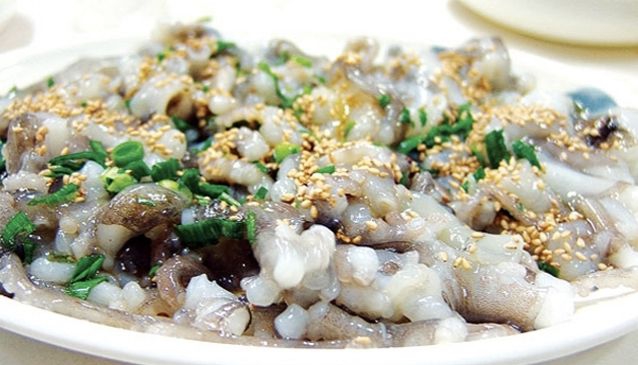
You will catch a whiff of it before you lay eyes on it. Beondegi (ë²ë°ê¸°) is steamed silkworm larvae. These little critters are the same creatures that produce the silk used in your luxurious and beautiful silk clothing. But did you know that they also double as one of Seoul's most popular street snacks?
If you have traveled to Taiwan, you are likely familiar with Taiwan's renowned "stinky tofu." This particular type of tofu boasts a distinct odor akin to that of rotting garbage, which deters many curious travelers from giving it a try. Beondegi is Seoul's equivalent to stinky tofu. It possesses a unique smell that some find delightful, while others find it repulsive.
Beondegi has a woody, earthy flavor that some believe makes it an ideal in-between-meal snack. However, others may argue that it simply tastes like dirt. Nevertheless, if you have the audacity to try it (and eventually develop a liking for it), you will be one step closer to immersing yourself in the authentic and traditional Korean cuisine culture.
Beondegi is a ubiquitous street snack readily available in pedestrian areas. It is also occasionally served in Korean-style pubs as a snack to accompany drinks. If you find yourself near Hangang Yeouido Park, there is always a vendor at the park entrance selling beondegi.
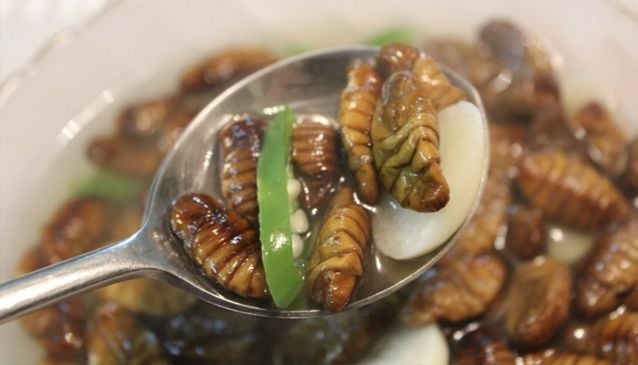
The name is misleading. Dalkdongjip (ëë¥ì§) directly translates to "Chicken Poop House," which might lead one to believe that dalkdongjip comes from the...ahem...nether regions of the chicken.
Fortunately for the adventurous gastronome, this assumption couldn't be further from the truth. Dalkdongjip is actually made from chicken gizzards. The gizzard is a part of the chicken's stomach that aids in digesting rough food particles, as chickens lack the ability to chew their food. Consequently, it hails from a much less unsavory section of the chicken's anatomy.
Dalkdongjip is surprisingly flavorsome. It possesses a slight crunch, requiring some chewing before swallowing. Typically, it is stir-fried with onions and peppers, resulting in a taste reminiscent of pepper steak, but with more emphasis on gizzard than beef.
Dalkdongjip pairs wonderfully with soju, which is precisely why you will find it in Korean hofs and pojangmacha - open-air tents scattered throughout Seoul that offer inexpensive food and drinks within a lively and convivial ambiance.
A pojangmacha (í¬ì¥ë§ì°¨) is undoubtedly the best place to find and relish dalkdongjip. One highly recommended location is the "tent city" situated in front of I'Park Mall at Yongsan Station. These orange tents, clustered together in front of the mall, are easy to locate. You can pick any one of them.
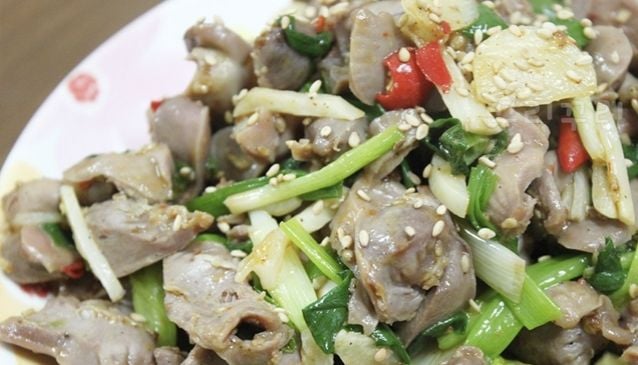
No list of exotic Korean cuisine would be complete without mentioning boshintang (ë³´ì í), perhaps one of Seoul's most controversial dishes.
While one might expect to encounter various strange and unique foods throughout Asia, few dishes incite as much controversy and emotional response as boshintang - which is essentially dog soup.
Yes, dog meat is on the menu in Seoul. There are dedicated dog farms where canines are raised for their meat, following the same practices used for cows, pigs, and chickens. Some individuals find it challenging to stomach this food due to sentimental memories of beloved pets in their homes. On the other hand, there are those who regard boshintang as simply another type of meat. After all, meat is defined as animal muscle, so a dog is no different from a cow. Meat is meat. This viewpoint is shared by many Koreans, particularly older men who believe that dog meat possesses unique properties that restore health and virility.
Boshintang, while not exceedingly popular in Seoul, is still a widely available dish. You can find restaurants serving boshintang in various neighborhoods throughout the city.
But how does it taste? Boshintang is served as a simmering soup mixed with green peppers, gochujang (red pepper paste), and duengjang - common ingredients found in many delectable Korean soups. The meat itself possesses a chewy texture, similar to roast beef, and it contributes a delightful flavor.
Therefore, if you are a carnivore and lack any sentimental attachment to cherished childhood pets, you might want to consider indulging in boshintang!


